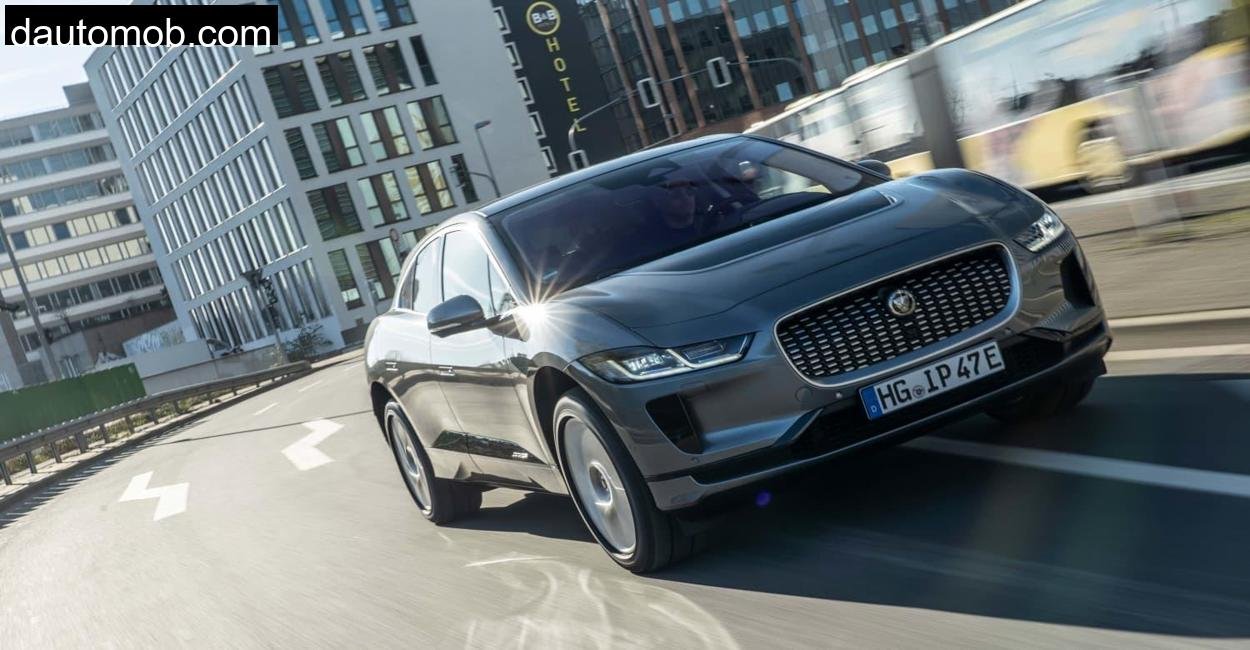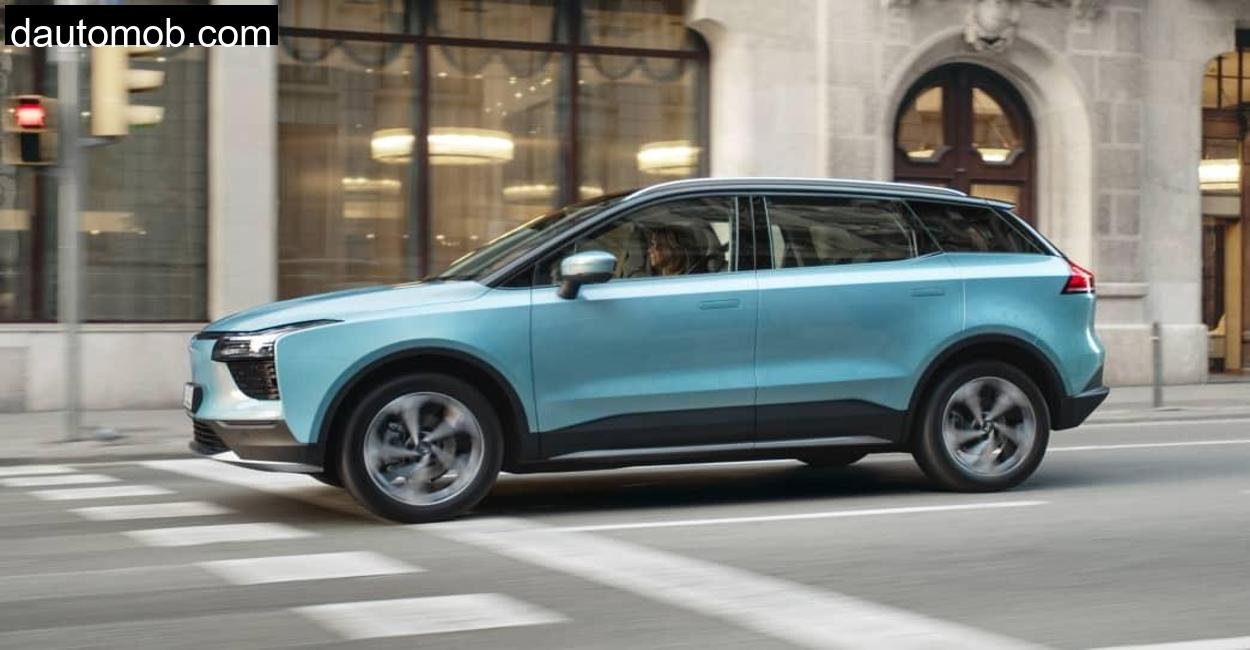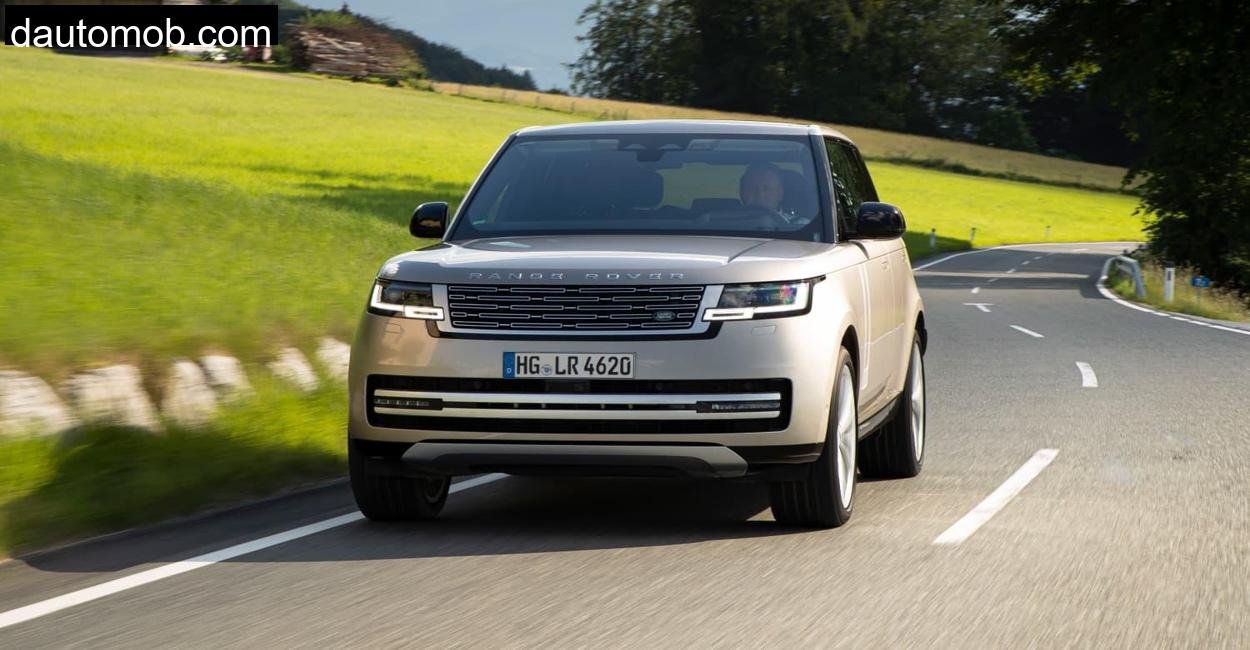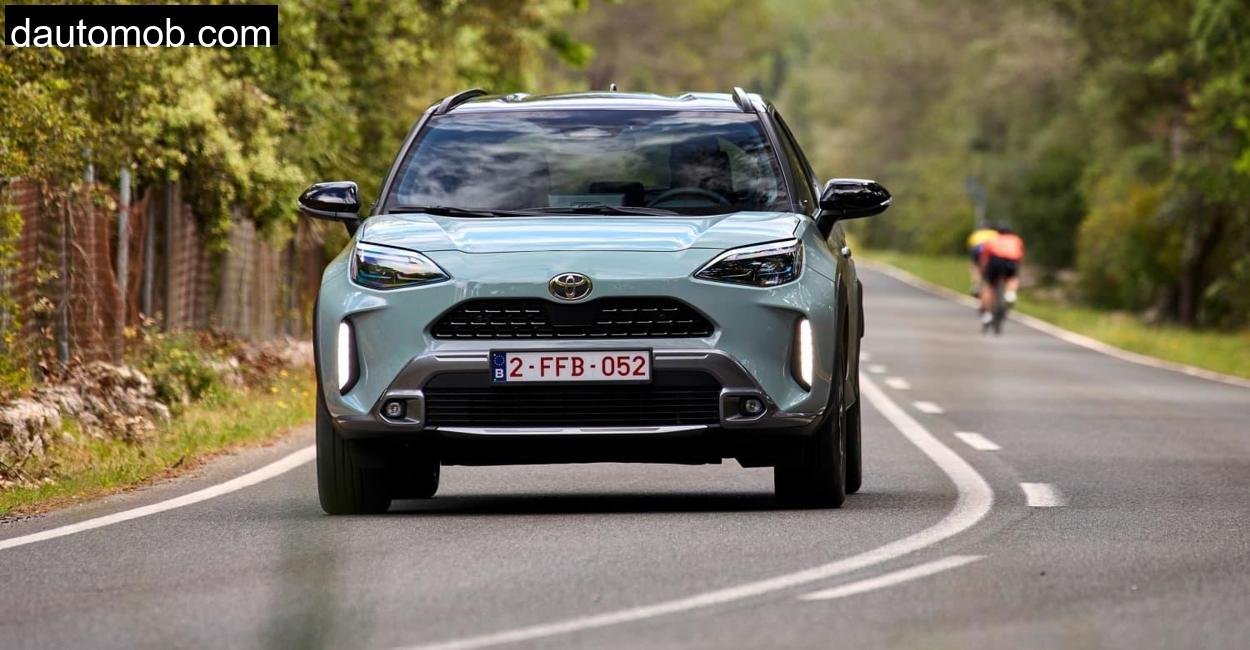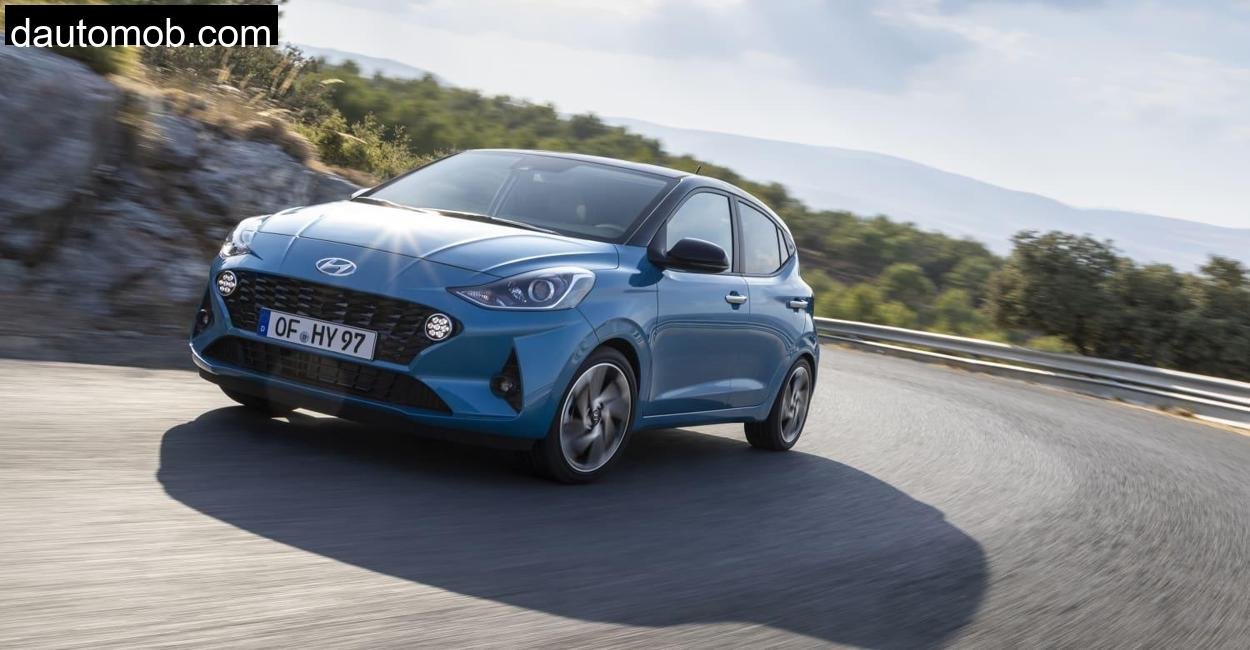Some cars don’t just show up, they arrive quietly, do the job with a shrug, and leave you wondering why they’re not more popular. The SsangYong Korando e, Motion is exactly that kind of car. While other compact SUVs flood the market with fanfare and shiny badges, the Korando, especially in its fully electric form, comes from the far side of the map, South Korea, and dares you to underestimate it.
And where better to put it to the test than the curving, forest, lined roads of the Schönbuch nature park in Baden, Württemberg? A place where deer outnumber people, and narrow roads snake between rolling hills, shaded by centuries, old oaks. It’s a place that demands quiet efficiency, balanced power, and some real, world practicality. Over the course of a day, that’s exactly what I set out to discover, with a Korando e, Motion fully charged and two bikes strapped to the back.
First Impressions: Looks Familiar, Drives Differently
From a distance, you’d be hard, pressed to tell the e, Motion apart from its combustion sibling. It wears the same broad, shouldered stance and chunky SUV proportions. Only a closer look reveals the blue accents on the grille and mirrors, a sign that electrons, not gasoline, are feeding the powertrain.
When I climbed into the cabin in the early Schönbuch morning mist, it felt surprisingly mature inside. There’s an easy calm about the dashboard, the materials are soft in the right places, and the layout doesn’t try too hard to impress. It simply works. The digital instrument cluster shows the typical electric readouts, range, regen mode, battery status, but there’s no overload of gimmicky interfaces. It’s refreshing.
Hit the start button, flick the gear lever into D, and it glides off silently. No drama. Just forward motion. As we wound our way out of the forest parking area, the car’s eerily quiet progress stood out even more. The only sound came from gravel crunching beneath the low, resistance tires and the faint electric hum mandated by pedestrian safety regulations.
Driving Through the Trees: Real, World Dynamics
Here’s where things got interesting. The Korando e, Motion doesn’t pretend to be a performance SUV, but it has a sense of immediate response that feels more alive than the spec sheet suggests. The 190 hp (140 kW) electric motor sends 360 Nm of torque to the front wheels, and it’s enough to chirp the tires if you jab the throttle too quickly.
In the real, world driving mix of Schönbuch, tight uphill bends, descending woodland straights, and occasional gravel pull, offs, the e, Motion felt composed and, most importantly, predictable. There’s a lightness in its steering at low speeds which makes parking and urban maneuvering a breeze, but it does get vaguer when the speed picks up. Through the forest switchbacks, body roll was moderate and easy to manage, but don’t expect Germanic sharpness here. This car prefers smooth inputs over aggressive cornering.
The biggest revelation came from the power delivery. No turbo lag, no gear hunting, just instant, linear acceleration that makes merging onto rural B, roads effortless. SsangYong claims a top speed of 156 km/h, but on these roads, you’ll rarely get close to that. What matters more is how it feels between 30 and 90 km/h, and in that band, the Korando e, Motion is quick and responsive.
That said, once the road opened up and we got to cruising speeds, road noise from the tires became more pronounced. It’s not unbearable, but it reminds you that sound insulation is one area where costs have been saved. On smoother tarmac, it faded, but on coarse surfaces, it was always present.
Range, Efficiency, and Charging: The Honest Truth
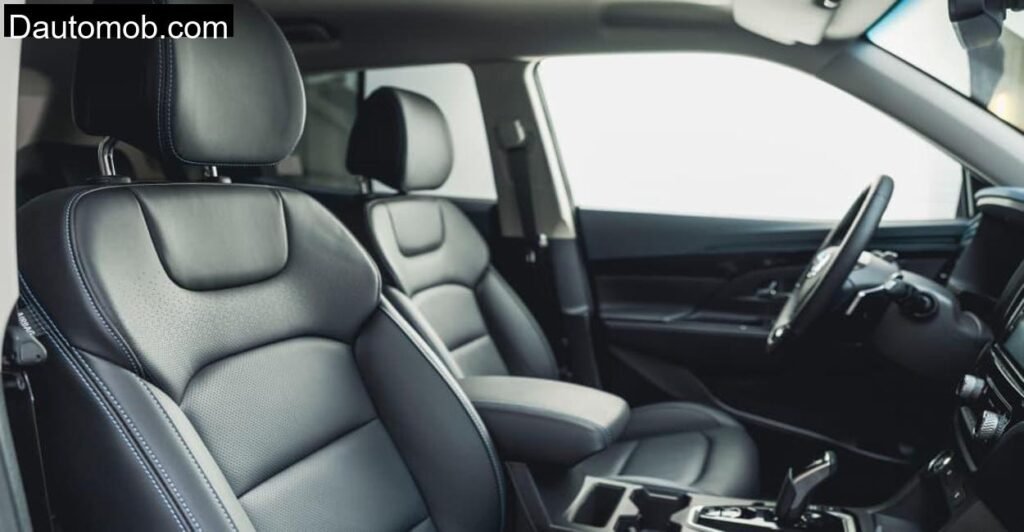
This is the elephant in the electric room. The Korando e, Motion uses a 61.5 kWh battery pack, of which around 55 kWh is usable. On paper, it promises up to 339 kilometers WLTP range, but in Schönbuch’s mixed terrain, with a moderate load and two bikes on the back, we were consistently seeing real, world range figures closer to 270, 290 km. On steeper climbs, that dipped quickly.
For highway use, particularly at sustained speeds over 120 km/h, consumption crept up to 20 kWh/100 km, which would put effective range below 250 km. For day trips and mixed, use driving, this is perfectly livable, but longer road trips will require planning.
Charging performance is a weak point. On AC, it’s limited to 6.6 kW, which meant an overnight top, up at a local station in Tübingen was necessary. DC fast charging is capped at 80 kW, which in theory takes the battery from 20 to 80 percent in 33 minutes, but in practice, we saw around 38, 40 minutes. It’s acceptable, but far from class, leading. On the plus side, the standard, fit heat pump worked efficiently to maintain cabin warmth without tanking the range.
Interior Life: Room for Everyone (and Their Bikes)
In a segment where practicality can often be sacrificed for swoopy rooflines or aggressive styling, the Korando feels almost boxy, in the best way. The upright profile translates into a spacious interior that had no trouble accommodating four adults comfortably. At 1.85 m tall, I adjusted the driver’s seat, then hopped in the back behind it, still had knee room and decent headroom. Even my 2, meter, tall photographer found the rear seats surprisingly accommodating.
The boot is a highlight. With 551 liters of usable space, it swallowed our camera gear, picnic supplies, and left room for our two bike helmets. Fold the seats, and you get up to 1248 liters, not bad for a compact SUV. Mounting bikes on a tow rack was straightforward, though towing capacity (1,500 kg) is more theoretical than practical if you care about range.
Up front, the 9, inch touchscreen is functional, though slightly low in the dash. The UI feels a generation behind, but it covers all basics, navigation, media, EV stats, and rear, view camera feeds. More importantly, physical climate buttons and knobs are retained, which makes adjustments on the move a stress, free affair.
Safety and Features: Well, Equipped for the Price
For a brand many overlook, SsangYong has packed in a surprising amount of tech. The base e, Motion Bronze already includes adaptive cruise control, city emergency braking, lane keep assist, drowsiness detection, and traffic sign recognition. Step up to the Platinum or Titanium trims, and you get blind spot detection, cross, traffic alert, and a 360, degree camera system that proved particularly handy while threading between tightly parked hikers’ vans near Bebenhausen.
Crash test results are strong, too: five stars in Euro NCAP (2019), which inspires confidence. The only real negative was the emergency braking distance, which was longer than average. From 100 km/h, the petrol version stopped in 35.3 meters, while the diesel took 37.7 meters. The electric variant hasn’t been officially tested yet, but we observed decent brake feel during downhill descents through the forest, progressive, if not particularly sharp.
Petrol Power: The Alternative Korando
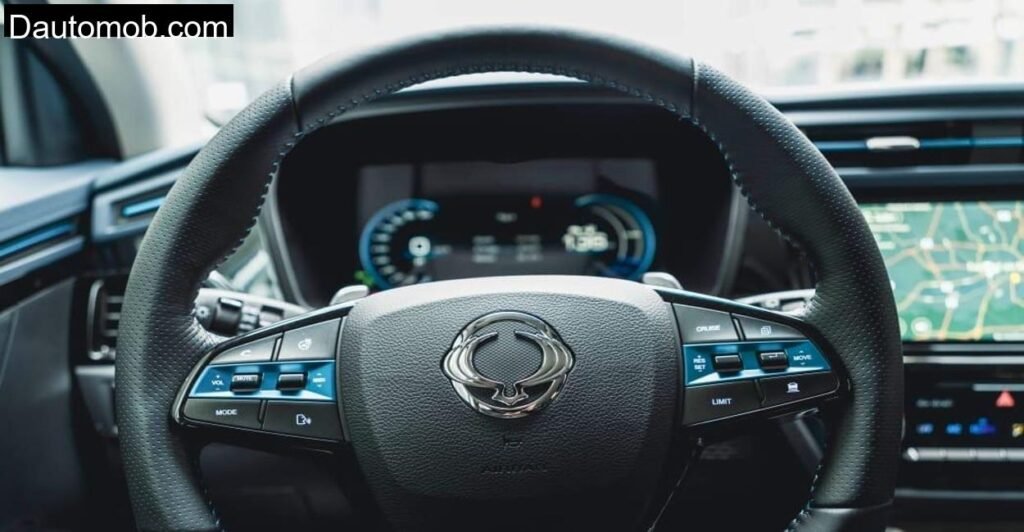
If you’re not ready to go electric, SsangYong still offers the 1.5, liter turbo petrol version. I took a short spin in one the following day through the same Schönbuch roads. With 163 hp and 280 Nm, it’s brisk off the line and surprisingly quick in mid, range, completing 60, 100 km/h sprints in just 5.4 seconds. However, fuel economy hovered around 8.5 l/100 km, which is high for a compact SUV, especially on forest roads where constant throttle modulation is needed.
The six, speed automatic is smooth in relaxed driving, but felt slightly indecisive under spirited inputs. Where the electric version delivers instant torque, the petrol needs a moment to build boost. Still, it’s a solid engine if range anxiety is a dealbreaker.
Specs Table: SsangYong Korando e, Motion
We ensure precision by sourcing all SsangYong technical info instantly from their official site.
| Specification | Details |
| Powertrain | Single front electric motor |
| Power | 140 kW (190 hp) |
| Torque | 360 Nm |
| Battery Capacity (Gross/Net) | 61.5 kWh / ~55 kWh |
| WLTP Range | Up to 339 km |
| Real, World Range (Tested) | ~270, 290 km (mixed) |
| Top Speed | 156 km/h |
| 0, 100 km/h Acceleration | Not officially stated |
| Charging (AC) | 6.6 kW (approx. 10 hours) |
| Charging (DC Fast) | 80 kW (20, 80% in ~33, 40 minutes) |
| Boot Space | 551 , 1248 liters |
| Towing Capacity | 1,500 kg |
| Price Range (Germany) | €42,490 , €47,590 (e, Motion) |
| Safety Rating | 5 Stars Euro NCAP (2019) |
| Heat Pump | Standard |
Conclusion: The Quiet Contender
The SsangYong Korando e, Motion isn’t loud. It doesn’t market itself with flashy ads or boast about 0, 100 times. But in the dense calm of Schönbuch, it made a real case for itself. It’s comfortable, spacious, and honest. The driving experience is smooth, the tech is competent, and while the charging speed and infotainment lag behind class leaders, the value for money is compelling.
If you’re looking for a no, nonsense electric SUV that fits real life, carrying bikes, exploring forests, hauling gear, and driving in comfort, don’t overlook the Korean underdog. The Korando might just surprise you, as it did me.
Is the Korando e, Motion suitable for long road trips?
Only if you’re okay with regular charging stops. Its 270, 290 km real, world range is good for moderate trips, but highway range drops significantly with a heavy load or cold temperatures.
How long does it take to charge the battery?
On AC (6.6 kW), it takes around 10 hours from 0 to 100%. On DC fast charging (80 kW), 20, 80% takes about 33, 40 minutes.
Is the petrol Korando a better buy?
The petrol version is quicker in short bursts and doesn’t require charging, but it’s less refined and much thirstier. The e, Motion offers smoother, cleaner performance.


